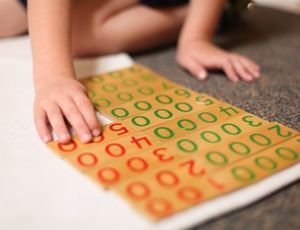It has been a few months since that fantastic moment your child said his first word, and that was just the beginning. As you watch him grow up, you witness how he experiments with oral language, from isolated words that sometimes are challenging, to understanding expressions of two words. Around two years old, most children will go through a phase called “The Explosion of Language.” It is called that because that is precisely what happens. After many months of listening to words and watching other people move their mouth and tongue, children suddenly process all that information and transform it into words. In this month’s article, we will talk about this “explosion” and the different ways we can keep stimulating their language without making them feel we are testing how many words they can say.
Developing a clear, precise, and concise oral language has a positive impact on the social and academic development of the child. Children who can make themselves understood will be socially adept. Also, the development of vocabulary sets the stage for pre-reading and writing skills; the more abundant the vocabulary, the more they can write and read. At this stage of your child’s development, he is going through a sensitive period of language, which means that he is attracted naturally to language, so there is no need to teach him words formally. He will absorb vocabulary without any effort if they are available in the language environment he is exposed to. As mentioned before, oral language sets the stage for reading and writing, but keep in mind that these complex processes will happen in the future, not now. The child under three-years-old is not ready to read or write, but he is ready to acquire as much language as he finds in the environment. Because we understand this, in a Montessori environment, we do not pressure children to learn letters or numbers. This causes controversy among parents because our society is continuously focused on the product of learning instead of the process, so much so that we tend to skip steps to see the result as quickly as possible.
There are many daily opportunities to help children develop oral language, and we want to make sure we take advantage of each. Here are some recommendations:
Use complete sentences. Avoid relying mostly on verbal directions or giving commands to your child. This happens since we are often rushed. Instead of telling your toddler, “Pick it up,” you can try, “Can you pick up your red sweater from the floor please? Somebody might step on it.” The more vocabulary you offer, the more stimulation your child will receive.
Avoid using fillers. Very often, when we are looking for the right word to say, we fill the silence with “uh,” “ah,” “like,” or “you know.” Your child absorbs these empty expressions too, which makes it more challenging for him to understand the structure of a sentence. Instead, try to be silent for a second while you find the word that you are looking for.
Use synonyms. Vary the words you use with the same meaning. It helps your child understand any expressions related to that action. For instance, if you always say, “I will buy some groceries today,” then the word “purchase” will be pruned from your child’s vocabulary.
Avoid baby talk. Use real words, and avoid using diminutive words. For instance: “horsy,” “piggy,” etc. Children deserve to hear accurate language. Also, some adults change their tone of voice when talking to children or infants. Avoid using a high pitched tone of voice. Instead, use your natural tone. Talk to them like you would like to be talked to.
Make pauses. When talking with a child, make pauses and give time for him to express himself. Beware that he might take longer than an older child because toddlers are still processing a lot of language before expressing it. Be patient and give your child time to talk without pressuring him.
Language Tools at Home
• Basket with real objects: Place 4-5 objects in a basket and let your child explore them, then mention their name. Do not test your child by asking him to repeat the names to you. Some ideas are different kinds of gloves (gardening, winter, mitts, bike), hair care items (hairbrush, headband, bows, hair clips), fruits, vegetables, etc.
• Basket with replica objects: Place 4-5 objects in a basket. The more realistic you can find, the better.
• Language Cards: Use cards with realistic images; avoid flashcards with words on them because your child is not ready to read or write yet, and it will be a distraction. We want the children to focus on the characteristics of the image.
• Books: They are an excellent resource for you and your child to develop language. Choose books that are long enough to keep his interest going, but not so long that he will walk away in the middle of it. Make sure to let him see all the illustrations and follow his pace when turning the pages. The more realistic, the better. Avoid stories about dragons, unicorns, princesses, and elements that he cannot find in the real world.
Remember to include moments of silence during the day. Sometimes we are so interested in our children learning as much as they can that we forget to give them a moment to decompress and process all of information received during the day. It is good for your child and you as well.
Item of the Month
Language Cards with Realistic Pictures
This set of language cards has clear and beautiful pictures of objects. Use them as a tool to enrich the vocabulary of your child. Children under the age of three must be exposed to real images of the world, images that give them information about size, shape, color, and even texture. Start by selecting a group of 6 pictures and then rotate them as needed. You can laminate them, put them in an album and use it as a book, or simply display them hanging on a cord for your child to see them at his height.
Link to buy them at Amazon.com:
https://www.amazon.com/Learning-Resources-Basic-Vocabulary-Photo/dp/B000URL2KU/ref=sxin_7_ac_d_rm?ac_md=0-0-cGljdHVyZSBjYXJkcw%3D%3D-ac_d_rm&cv_ct_cx=picture+cards&dchild=1&keywords=picture+cards&pd_rd_i=B000URL2KU&pd_rd_r=e416f8de-eda3-49c6-b036-a7f221527039&pd_rd_w=NQbES&pd_rd_wg=QunHa&pf_rd_p=e3dc9e0c-9eab-4c3e-b43a-ba36f8522e14&pf_rd_r=NDZJ5BBJNK52VPGWVX8M&psc=1&qid=1594824976&sr=1-1-12d4272d-8adb-4121-8624-135149aa9081
Quote of the Month
“The development of language is part of the development of personality, for words are the natural means of expressing thoughts and establishing understanding between people.”
-Dr. Maria Montessori
Have Some Extra Time?
Montessori’s Intuition by Montessoriguide.com
Watch this 7-minute video where Judi Orion, a renowned AMI Montessori trainer, talks about the importance of allowing children to repeat activities as many times as they need, and also how the three-period lessons work for language and why it is a great technique to enrich language.
Link to video at Vimeo.com:
https://vimeo.com/channels/1474176/121361458



